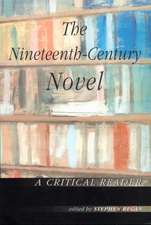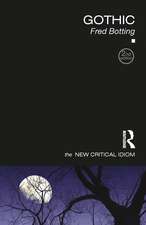The Portrait in Fiction of the Romantic Period
Autor Joe Brayen Limba Engleză Hardback – 9 iun 2016
| Toate formatele și edițiile | Preț | Express |
|---|---|---|
| Paperback (1) | 382.47 lei 6-8 săpt. | |
| Taylor & Francis – 12 dec 2019 | 382.47 lei 6-8 săpt. | |
| Hardback (1) | 819.50 lei 6-8 săpt. | |
| Taylor & Francis – 9 iun 2016 | 819.50 lei 6-8 săpt. |
Preț: 819.50 lei
Preț vechi: 1177.91 lei
-30% Nou
Puncte Express: 1229
Preț estimativ în valută:
156.82€ • 167.69$ • 130.75£
156.82€ • 167.69$ • 130.75£
Carte tipărită la comandă
Livrare economică 17 aprilie-01 mai
Preluare comenzi: 021 569.72.76
Specificații
ISBN-13: 9781409470397
ISBN-10: 1409470393
Pagini: 204
Dimensiuni: 156 x 234 x 18 mm
Greutate: 0.43 kg
Ediția:1
Editura: Taylor & Francis
Colecția Routledge
Locul publicării:Oxford, United Kingdom
ISBN-10: 1409470393
Pagini: 204
Dimensiuni: 156 x 234 x 18 mm
Greutate: 0.43 kg
Ediția:1
Editura: Taylor & Francis
Colecția Routledge
Locul publicării:Oxford, United Kingdom
Notă biografică
Joe Bray is Reader in Language and Literature at the University of Sheffield, UK.
Cuprins
Introduction: The portrait and the novel 1 The portrait in public 2 Exchanging ‘dear self’: The miniature portrait in the novel of sensibility and the Gothic 3 Visual and verbal caricature 4 Jane Austen: The subjectivity of ‘likeness’ 5 Sir Walter Scott: Reworking the Gothic portrait, Conclusion: ‘The very thing itself’
Recenzii
"Bray’s specific readings ... are exemplary and provide solid ground for further study. His attention to the concepts “likeness” and “character” is especially effective."
- Marie Lathers, Case Western Reserve University, Cleveland, OH, USA in European Romantic Review (2017)
- Marie Lathers, Case Western Reserve University, Cleveland, OH, USA in European Romantic Review (2017)
Descriere
Beginning with the premise that the portrait was undergoing a shift in meaning during the Romantic age, Joe Bray investigates how the language of portraiture pervades the fiction of writers such as Maria Edgeworth, Jane Austen and Sir Walter Scott. Demonstrating the interpenetration of the novel and the portrait in the period, he examines the complex ways in which the two art forms interact and shape each other's development.


















